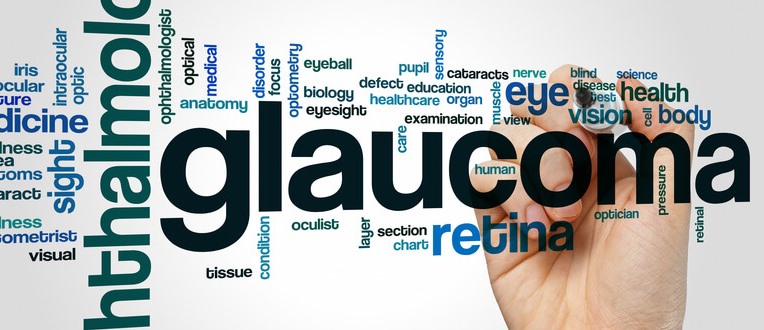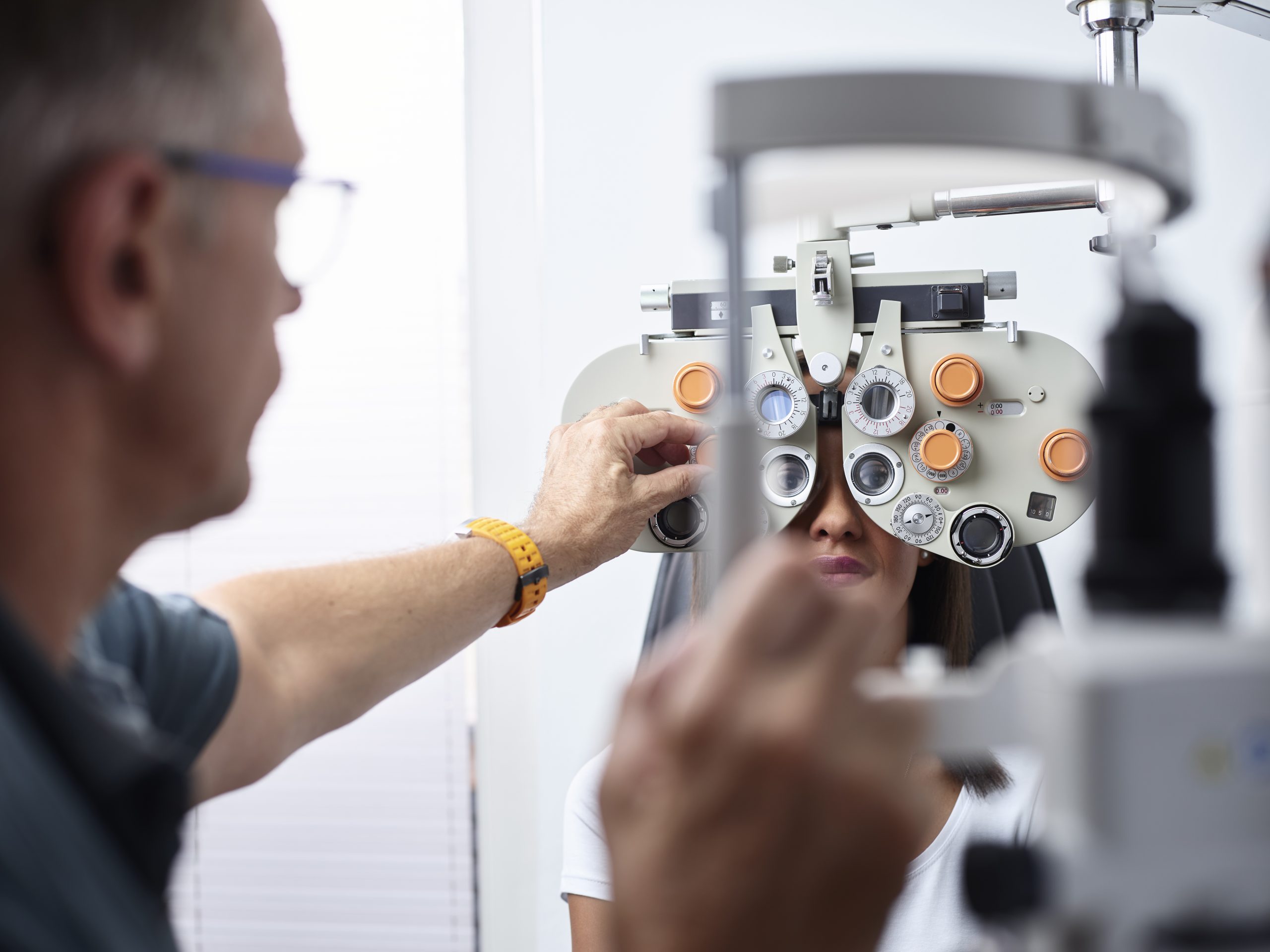What is glaucoma?
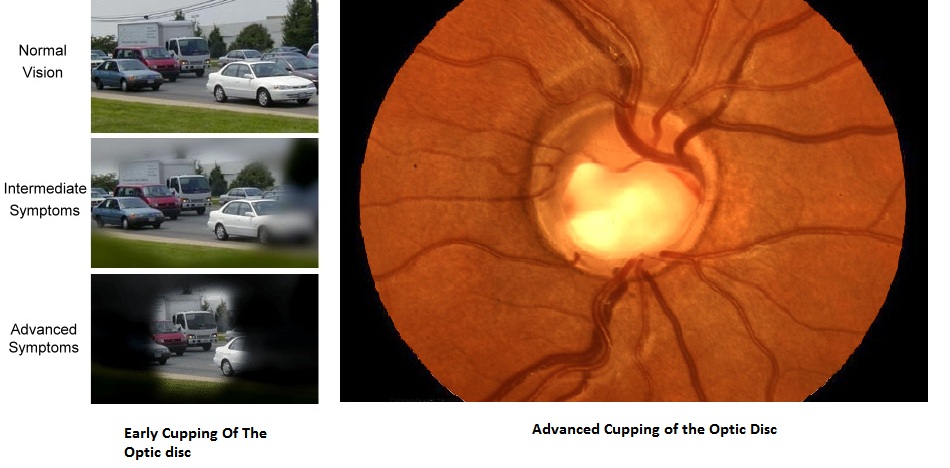
Glaucoma is the name for a group of eye conditions which damage the optic nerve. This nerve carries information from the light sensitive layer in your eye, the retina, to the brain where it is perceived as an image. The retina can be thought of as akin to the 'film' of a camera where light is focused. The information is then sent along the optic nerve.
What controls pressure in the eye?
The eye is filled primarily with water based substances and liquids. The fluid of interest in glaucoma is the "aqueous". This is produced behind the coloured part (iris) of the eye. It flows through the pupil into the front of the eye and drains. The drainage system is call the Trabecular Meshwork and is sited between the cornea (the transparent front layer of the eye) and iris. The aqueous is not related to the tears.
Increased pressure in the eye is either due to increased production of aqueous, or reduced drainage of aqueous.
How does increased pressure damage the nerve?
The mechanism of damage is unclear. Certainly, when the pressure goes up very suddenly (as in acute glaucoma), there is clearly a lack of blood supply to the nerve head in the eye. There are various other theories as to how the nerve damage actually occurs.
What is certainly known, is that LOWERING this pressure delays the progression of glaucoma. In sudden acute glaucoma, lowering the pressure can save the sight in an eye which is otherwise destined to lose vision.
How common is glaucoma?
It is one of the commonest reasons for blindness in the Western world. There are several different types. These include chronic simple glaucoma (the commonest Type), acute glaucoma, congential glaucoma and secondary glaucomas which arise secondary to some other condition or influence.
Who gets chronic glaucoma?
There are several 'risk factors' for developng chronic glaucoma. These are:
- Age - Chronic glaucoma is uncommon below the age of 40 but affects 2% of people over this age and 5% over 65.
- Race - People of West African origin seem to have an increased risk of developing glaucoma.
- Family History - There is a 'genetic' element to glaucoma. If a close relative (parent/sibling) has Glaucoma, you should not worry, but ensure you have regular eye examinations to detect any changes as early as possible (should they ever occur)
- Myopia - Very short sighted people are more at risk of developng chronic glaucoma.
If your optometrist feels your risk is higher than average, they will recommend EyeSense for more detailed, regular eye care.
Why can untreated chronic glaucoma cause serious loss of sight?
The main reason is that chronic glaucoma usually has NO SYMPTOMS. There is no pain and your eyesight will seem to be normal too, but silently, your vision is slowly deteriorating. Glaucoma tends to damage the peripheral field of view first so is not noticed by most. Only when the peripheral field has been significantly damaged, do some people start bumping into things, or see oncoming vehicles at the last minute for example.
How is chronic glaucoma detected?
There are basic tests that can help detect glaucoma. These are:
- Measuring the pressure inside the eye - a puff of air or a special 'tonometer
- Examination of your 'visual field' - a machine where you press a button when you see lights in your peripheral vision: computer controlled and analysed.
- Examination of the glaucoma optic nerve by your optometrist
All these tests are very straightforward, they don't hurt and can be done by most high street optometrists in a routine eye examination.
At Lynne Fernandes we also offer advanced glaucoma optic nerve detection. This is achieved by examining in more detail and more regularly. The data produced is analysed by computer algorythms to pick out minute changes that traditional testing would miss. This service is offered as an EyeSense clinic.
The protocols for these clinics are written and reviewed by Gerard Fernandes who has the highest glaucoma qualifications and has worked as a Glaucoma Specialist Optometrist at Bristol Eye Hospital for over 15 years.
Can chronic glaucoma be treated?
YES. A simple regimen of daily drops to the eye can delay progression of glaucoma in the vast majority of people. A modern laser treatment called Selective Light Trabeculoplasty has been shown to be as effective as drops in new patients.
Sometimes, an operation called Trabeculectomy is required. Both of these treatments have been shown to be very effective.
What is acute glaucoma?
This is a form of glaucoma where the pressure inside the eye shoots up very suddenly. It happens because of a physical blockage of the drainage channels inside the eye at the 'angle' of the eye (where the cornea meets the iris). This is why it is often referred to as 'Angle Closure Glaucoma'.
What are the symptoms of acute glaucoma?
- Severe Pain - often, people wake up in the night with a very severe pain in one eye (although it can happen in both eyes simultaneously - this is uncommon)
- Redness of the eye
- Blurred Vision - sometimes 'haloes' can be seen around bright lights.
- Nausea & Vomiting.
- Brow ache
It is obviously better to be treated in before acute glaucoma occurs. Some patients are more at risk. If your optometrist considers you to be more at risk they will offer you to be referred to an EyeSense clinic or Bristol Eye Hospital
How is the Acute Glaucoma treated?
Acute glaucoma is initally treated with powerful drugs to help bring down the pressure inside the eye very rapidly. Subsequently, depending on the nature of the cause of the attack, drops, laser, and surgery are the various options available to the surgeon.
A similar treatment, usually with laser only, is usually performed in the other eye, to ensure the same acute attack cannot happen there too.
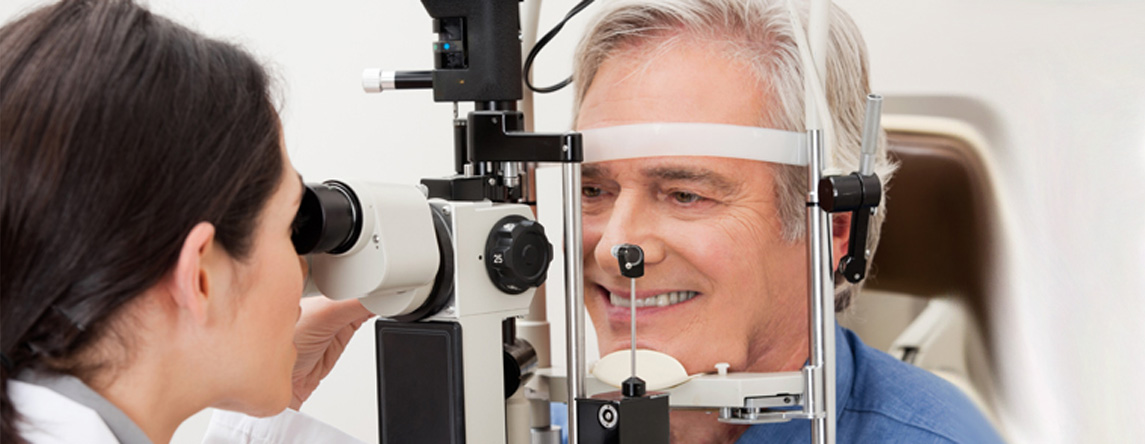
OHT

Glaucoma Suspects
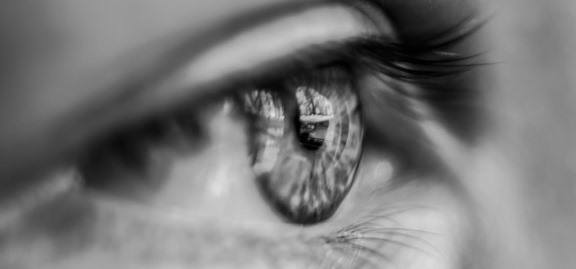
Risk of Glaucoma
